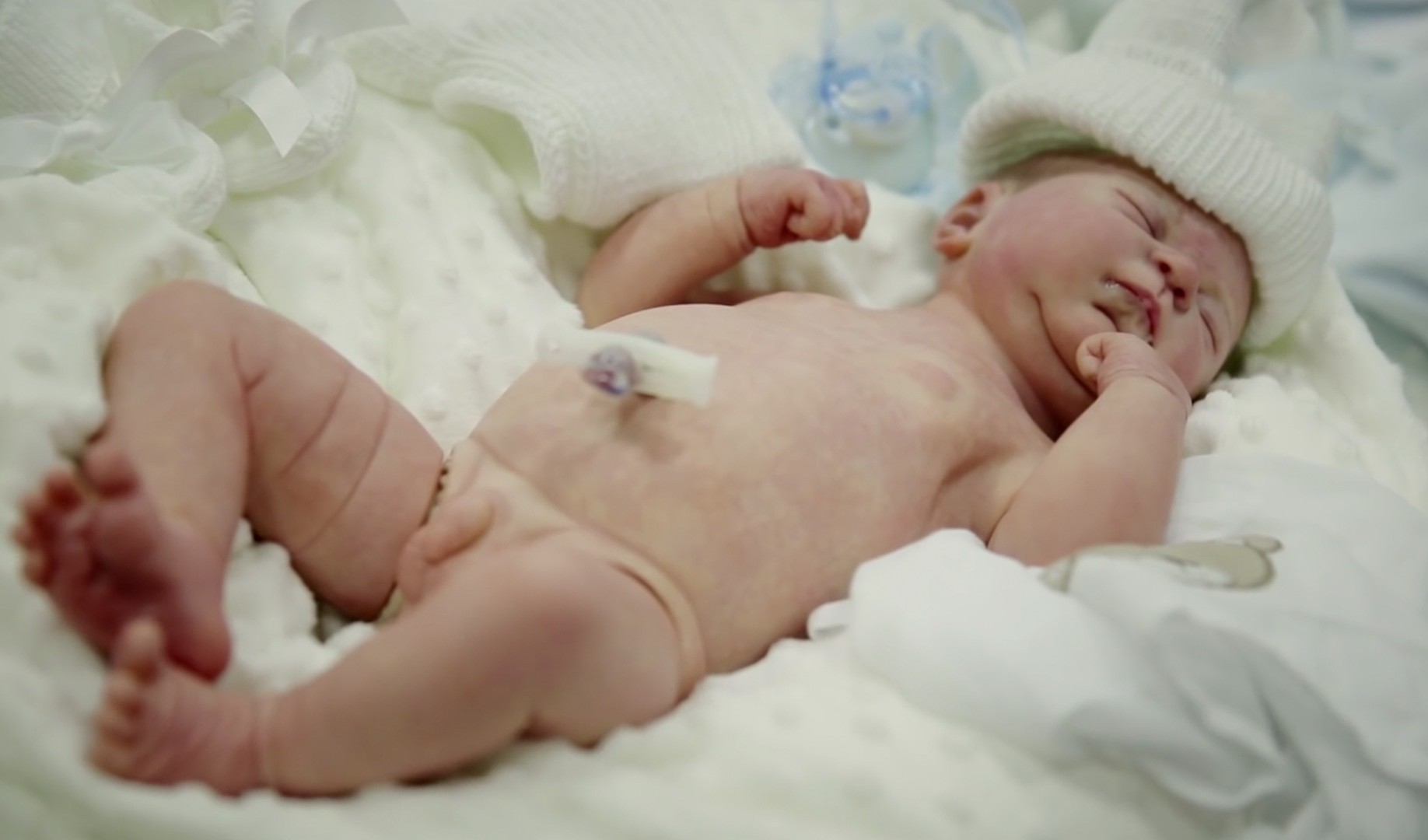Dropped Baby on Floor What to Look for
The Scenario: Your buddy just became a dad, and you lot and the gang are meeting his little bundle of joy for the get-go time. You never were a sucker for babies, so you're underwhelmed heading into the run across-and-greet. Only yous may accept developed a baby bias—later all, you're practically an uncle now!—because the 2d you lay your eyes on that big-headed newborn you can't wait to get your hands on him. "Don't drop him!" your idiot friend jokes the 2nd you take the baby in your artillery. You freeze. Your worst nightmare flashes before your eyes. He laughs it off, but you hang on for dear life. Are yous right to be terrified of dropping this baby? The Facts: In example you haven't noticed, babies have huge heads. Their large noggin is both the most important and the most vulnerable role of their body. "The brain is developing very chop-chop in the starting time yr of life, it's incredibly metabolically agile, and information technology's also relatively unprotected," says Christopher Moir, a pediatric trauma surgeon at the Mayo Clinic. An adult's skull is 1 solid construction, but at birth it's fabricated of 22 separate bones that fuse together over the first ii years of life. That flexible skull lets the infant clasp through the birth canal—that'south why some newborns' heads expect misshapen correct later nascence—and gives the brain room to grow. "Falls are the absolute number i crusade of serious injury in children under historic period one, and the head is by far the most common system injured," Moir says. When babies injure their heads from a fall, they almost ofttimes fracture their skull or damage their soft tissue, co-ordinate to a study from the Academy of Pennsylvania. Caput injuries decrease with age, partially because the skull strengthens and because the baby's head becomes proportionately smaller compared to the rest of its torso. From a physics perspective, that ways the baby is less prone to plunge heavy-head-start. Your hip—bold that's where y'all're holding the babe—isn't a super unsafe altitude from the ground. "There are very few serious injuries from that elevation," says Robert Sege, a general and child abuse pediatrician and a spokesperson for the American Academy of Pediatrics. English researchers looked at fall types, age, and injuries, and found that for infants, falling from a caregiver's arms had the highest rate of skull fractures—9 percentage. Even so, 84 percent of the babies had normal CT scans following the fractures, which commonly heal on their own, Sege says.
More From VICE: Reborn Babies

It's also important to remember that your body isn't the only affair that lifts a baby off the basis: A study published this year in Pediatrics found that nursery products—similar irresolute tables, loftier chairs, and cribs—cause more than 66,000 injuries to children under the age of 3 every year in the The states. The Worst That Tin can Happen: The baby could develop a brain bleed, but that could only really happen if the infant dropped head-outset straight from your artillery onto a hard floor with admittedly no break in the fall. That sort of unprotected drop is quite rare, Moir says, because most adults endeavor to grasp for the baby or slow downward the autumn with their arm or leg before information technology reaches the ground. If you're scared of sending the infant tumbling, stay away from stairs: The momentum and multiple impacts mean there's a greater chance of skull fracture and intracranial injury compared to existence dropped on the floor, the English researchers found. In full general, head injuries leading to permanent inability or death are and then uncommon from brusk, accidental falls that when a baby comes into the emergency room with serious injuries to the brain, "we worry about not-accidental trauma: child abuse," Moir says. What'll Probably Happen: The baby will probably trample on whatever trunk part hit the ground, especially if it was a hard surface like tile or hardwood. If the baby got a blow to the head, it could get a skull fracture—but linear fractures, the most common, heal on their own and accept no long-term effects. "You lot have to have a lot of force to non merely hurt the skin and go a bruise, simply to interruption the skull, and and so even more force to do annihilation inside the skull," Sege says. "A normal skull will protect a baby well-nigh always from falling from a brusque height." The infant may interruption a bone, which would exist apparent if information technology starts crawling differently or stops using one of its limbs. What Y'all Should Do: At the very least, call the pediatrician right away. The moments after the bear on tin can be very telling: Does the baby cry? Are you able to condolement it? Does it continue to interact, eat, and move as usual? Then chances are the baby is fine, but your pediatrician will ask you lot specific questions and give you advice about what your adjacent steps should exist, Sege says. If the baby loses consciousness, starts airsickness, refuses to swallow, or doesn't cry or open its eyes after the fall, bring the baby straight to the emergency room, Sege says—those responses could bespeak a more serious injury, like a encephalon bleed. In the end, you might endure more than the babe does. "The overall result is generally that the parents are damaged for life from worry, and the babies are fine," Sege says. But this is a living human being we're talking about, so if you're in doubt at all about the baby'southward well-being, it'south e'er better to become to the emergency room than to hope everything is okay. Read This Next: Getting Oral Sex While Pregnant Could Mess With the Babe
Source: https://www.vice.com/en/article/qvvqvb/exactly-how-dangerous-is-it-to-drop-a-baby
0 Response to "Dropped Baby on Floor What to Look for"
Post a Comment